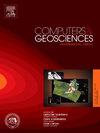距离变换损失:地震数据的边界感知分割
IF 4.4
2区 地球科学
Q1 COMPUTER SCIENCE, INTERDISCIPLINARY APPLICATIONS
引用次数: 0
摘要
考虑到地下震源的复杂性和高变异性,地震数据的分割是一项具有挑战性的工作。这项艰巨的任务有效地识别了地质特征,包括相分类、断层检测和层位解释。因此,这项工作引入了一个名为距离变换损失(DTL)的新成本函数,当类边界被错误分类时,它会惩罚深度网络,以换取更准确的等高线描绘,这是地质领域的一个重要方面。DTL包括四个关键步骤:轮廓检测、距离变换映射、逐像素乘法和所有网格元素的求和。我们使用公开可用的地震数据集对深度卷积架构进行了全面评估,证明了所提出的方法始终提高了语义分割性能。结果表明,DTL是一种鲁棒的、与体系结构无关的损失函数,能够解决地震解释任务中常见的类不平衡和边界描绘挑战。本文章由计算机程序翻译,如有差异,请以英文原文为准。
Distance Transform Loss: Boundary-aware segmentation of seismic data
The segmentation of seismic data is a challenging exercise given the complexity and high variability of subsurface sources. This arduous task is effective in the identification of geological features, including facies classification, fault detection, and horizon interpretation. As a result, this work introduces a new cost function entitled Distance Transform Loss (DTL) that punishes deep networks when class boundaries are misclassified in exchange for more accurate contour delineations, an important aspect in the geological field. DTL consists of four key steps: contour detection, distance transform mapping, pixel-wise multiplication, and the summation of all grid elements. We conduct a comprehensive evaluation of deep convolutional architectures using publicly available seismic datasets, demonstrating that the proposed approach consistently enhances semantic segmentation performance. The results highlight DTL as a robust and architecture-agnostic loss function, capable of addressing class imbalance and boundary delineation challenges that commonly arise in seismic interpretation tasks.
求助全文
通过发布文献求助,成功后即可免费获取论文全文。
去求助
来源期刊

Computers & Geosciences
地学-地球科学综合
CiteScore
9.30
自引率
6.80%
发文量
164
审稿时长
3.4 months
期刊介绍:
Computers & Geosciences publishes high impact, original research at the interface between Computer Sciences and Geosciences. Publications should apply modern computer science paradigms, whether computational or informatics-based, to address problems in the geosciences.
 求助内容:
求助内容: 应助结果提醒方式:
应助结果提醒方式:


